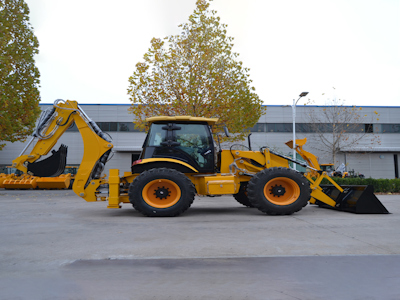
В современном мире, где промышленность и технологии развиваются стремительными темпами, вопрос выбора оборудования становится ключевым для успеха любого предприятия. Надежное оборудование не только гарантирует долговечность использования, но и способствует значительной экономии ресурсов, что в конечном итоге влияет на рентабельность и устойчивость бизнеса. В этой статье мы подробно рассмотрим, почему инвестиции в качественное оборудование окупаются многократно, и как это связано с общими тенденциями в экономике и экологии.
Введение: Почему надежность оборудования так важна?
Надежность оборудования – это не просто техническая характеристика, а фундаментальный аспект, который определяет эффективность всей производственной цепочки. В условиях высокой конкуренции предприятия вынуждены искать ways to optimize their processes, and one of the most effective ways is through the use of reliable machinery. Equipment that is built to last reduces the frequency of breakdowns, minimizes downtime, and ensures consistent output quality. This, in turn, leads to lower operational costs and higher profitability.
Moreover, reliable equipment contributes to resource conservation. By reducing the need for frequent replacements and repairs, companies can save on raw materials, energy, and labor. This not only benefits the bottom line but also aligns with global efforts to promote sustainability and reduce environmental impact. In this context, the choice of equipment becomes a strategic decision that impacts not just the company's finances but also its corporate social responsibility.
Экономические аспекты: Как надежное оборудование экономит ресурсы?
С экономической точки зрения, инвестиции в надежное оборудование могут показаться высокими initially, but they pay off in the long run. Let's break down how this works. First, reliable equipment requires less maintenance. Regular upkeep is still necessary, but with high-quality machinery, the intervals between servicing can be longer, and the costs associated with repairs are significantly reduced. This means that over time, the total cost of ownership decreases, making it a more economical choice compared to cheaper, less reliable alternatives.
Second, efficient equipment often incorporates advanced technologies that optimize resource usage. For example, modern industrial machines are designed to consume less energy while maintaining high productivity levels. This directly translates to lower utility bills and a smaller carbon footprint. In sectors like manufacturing or agriculture, where resource consumption is substantial, even small improvements in efficiency can lead to substantial savings. Additionally, reliable equipment reduces waste by minimizing errors and defects in production, further conserving materials and reducing disposal costs.
Third, the durability of equipment means that it doesn't need to be replaced as frequently. This not only saves money on capital expenditures but also reduces the environmental impact associated with manufacturing new equipment. The production of machinery involves the use of raw materials, energy, and water, so extending the lifespan of existing equipment contributes to a more circular economy. Companies that prioritize longevity in their equipment choices are often seen as leaders in sustainability, which can enhance their brand reputation and attract environmentally conscious customers.
Технологические инновации: Роль современных разработок
Современные технологические инновации играют crucial role in enhancing the reliability and efficiency of equipment. From IoT sensors that monitor performance in real-time to AI-driven predictive maintenance systems, technology is transforming how we manage industrial assets. These advancements allow companies to anticipate failures before they occur, schedule maintenance proactively, and optimize operations based on data insights. As a result, equipment downtime is minimized, and resource usage is optimized to an unprecedented degree.
For instance, in the energy sector, smart grids and reliable turbines ensure stable power supply with minimal losses. In agriculture, precision farming equipment reduces water and fertilizer usage while increasing crop yields. These examples illustrate how technological integration not only boosts reliability but also drives resource efficiency. Investing in such innovative equipment is therefore a smart move for any forward-thinking business.
Практические примеры: Успешные кейсы из различных отраслей
To illustrate the benefits of reliable equipment, let's look at some real-world examples. In the automotive industry, companies like Toyota have long emphasized the importance of durable machinery in their production lines. By usingrobots and assembly equipment that are built to last, they have achieved high levels of efficiency and quality, reducing waste and saving resources over decades of operation.
In the mining sector, where conditions are harsh and equipment failure can be catastrophic, investing in reliable machinery from brands like Caterpillar has proven essential. Their equipment is designed for longevity, with features that reduce fuel consumption and minimize environmental impact. This not only lowers operational costs but also enhances safety and compliance with regulations.
Another example comes from the healthcare industry. Medical equipment, such as MRI machines or surgical tools, must be extremely reliable to ensure patient safety and effective treatment. Hospitals that invest in high-quality equipment experience fewer disruptions, better outcomes, and overall cost savings due to reduced maintenance and replacement needs.
Заключение: Будущее надежного оборудования
В заключение, можно confidently say that reliable equipment is a cornerstone of modern industry, offering unparalleled benefits in terms of durability and resource savings. As technology continues to evolve, we can expect even greater advancements that will further enhance these advantages. Companies that embrace this trend will not only improve their bottom line but also contribute to a more sustainable future.
It is clear that the initial investment in quality equipment is justified by the long-term gains. By prioritizing reliability, businesses can achieve greater efficiency, reduce their environmental footprint, and build a reputation for excellence. In an era where resources are becoming scarcer and environmental concerns are growing, this approach is not just wise—it is essential.
Therefore, whether you are a small startup or a large corporation, consider the value of reliable equipment in your operations. Make informed choices, invest in technology, and reap the rewards of durability and resource economy for years to come.



 1388xx888xx
1388xx888xx